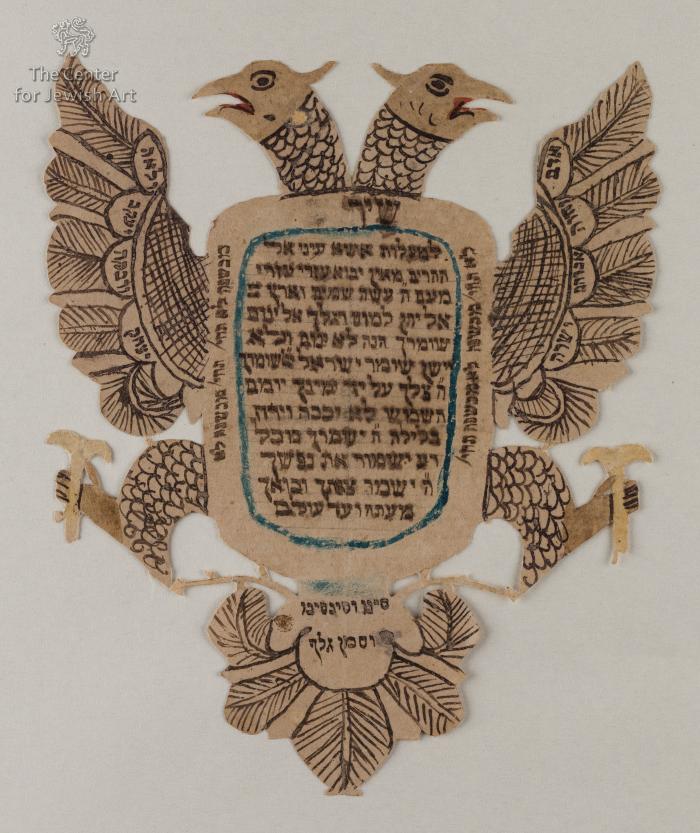Obj. ID: 51017 Amulet, Ukraine, circa 1900

sub-set tree:
The following description was prepared by William Gross:
From earliest times, man has tried to protect himself from misfortune by the use of objects which he considered holy or otherwise (e.g., magically) potent. Amulets and talismans are items generally worn around the neck or wrist, carried in a pocket or purse or hung on a wall. They are meant to protect or aid those who carried or wore them. The Hebrew word for amulet, kame‘a, has the root meaning "to bind". Jewish amulets are usually comprised of texts (either letters or graphic symbols) that are inscribed on some sort of material; some may also contain plant matter or precious stones. The texts of amulets usually include holy names that are believed to have the ability to affect reality, along with incantations summoning angels or other magical powers. For the most part, an amulet has a specific purpose: to ease childbirth, facilitate recovery from illness, improve one’s livelihood, and so on, but in the modern world many are also made for general protection.
This is an impressive birth amulet cut out in the form of the double-headed eagle so often seen ion Jewish art of the Ukraine. The technique of paper cutting was also popular among the Jews of that country. But to find a small birth amulet in the papercut form is highly unusual. Most of the normal texts for such a birth amulet are present, even if in an unusual form, including the 3 angels, the "Shir le-Ma'alot" and the names of the Patriarchs and Matriarchs.


